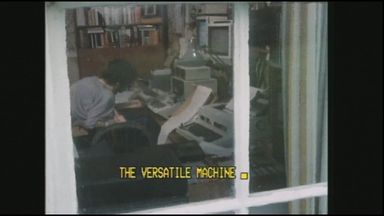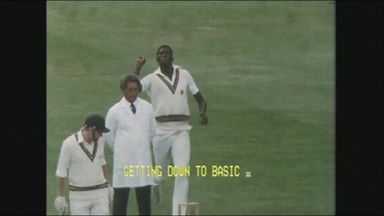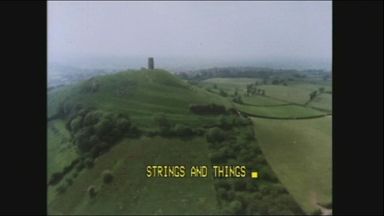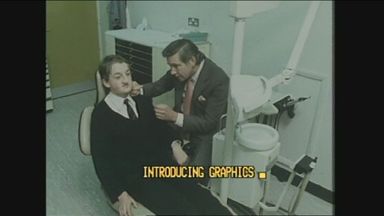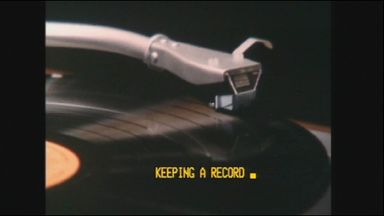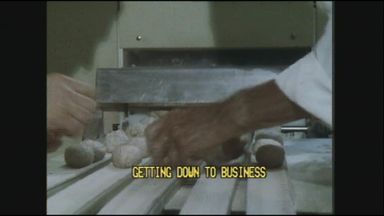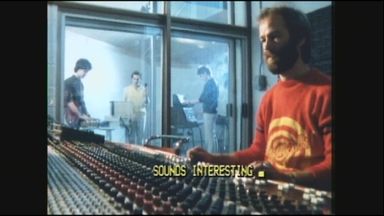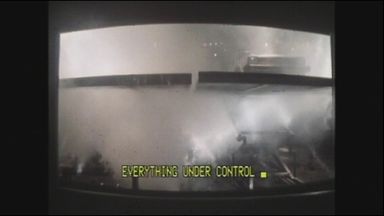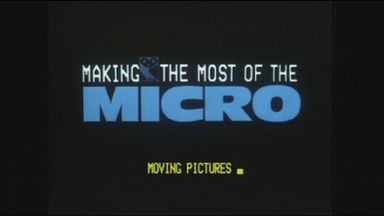Making the Most of the Micro
10. At the End of the Line
Clips from this programme
Jerry Van Atta in London communicates with his head office in San Francisco using electronic mail sent and received by telephone using an acoustic coupler.
Duration: 01:52John Coll demonstrates a simple local area network and sends messages from one computer to another via a simple server
Duration: 02:06John Coll and Mac send messages to each other using the public telephone system and acoustic couplers
Duration: 02:53An animation showing how two computers anywhere can connect using acoustic couplers using the phone system
Duration: 02:18Electronic mail systems allow people to send and receive messages and store and retrieve them in a central computer
Duration: 01:29Vestric Ltd have developed an ordering system for pharmacies to use to order medicines needed urgently in chemist shops
Duration: 03:10Richard Hooper demonstrates the Prestel information system to see live flight information, book theatre tickets and deliver telesoftware
Duration: 04:47Graham Clayton of the BBC Ceefax service shows how teletext information can be received on a television set. Using the BBC Micro computer connected to a teletext adapter in addition, computer programs can be downloaded using the BBC's telesoftware service.
Duration: 04:46A BBC Micro program is transmitted as a final sequence using audio tones.
Duration: 01:25Making the Most of the Micro
1. The Versatile Machine
First broadcast: 10th January 1983
Duration 24:16
The second series of The Computer Programme 1: The Versatile Machine: Richard Gomm, almost completely disabled from birth, uses a microcomputer to control equipment around his room, to write philosophy and poetry and to entertain himself. For him it's a lifeline. Ian McNaught-Davis begins a systematic look at how micros are used and at how to use them. Assisted by John Coll he looks at how a simple system can be expanded to do many different things and takes a trip inside the BBC's own microcomputer.
2. Getting Down to Basics
First broadcast: 17th January 1983
Duration 24:15
The second series of The Computer Programme. 2: Getting down to BASIC: The language most personal microcomputers understand is called BASIC and although different makes of machine use different 'dialects' of the language, the fundamental principles are the same on almost all machines. Ian McNaught-Davis describes the three programming structures and then writes a simple program which could be used to help children practise their maths skills. Catherine Robins visits a school where young children are learning to program the computer in a simple way. Director: MIKE COCKER Producer: DAVID ALLEN
3. Strings and Things
First broadcast: 24th January 1983
Duration 24:23
The second series of The Computer Programme. 3: Strings and Things: How do computers handle words and how do programmers handle long programs? Ian McNaught-Davis takes a look at 'string' handling, at word processing and at the techniques of good and bad programming, with the aid of Ian Trackman. Studio director PATRICK TITLEY Producer DAVID ALLEN
4. Introducing Graphics
First broadcast: 31st January 1983
Duration 23:59
The second series of The Computer Programme: 4: Introducing Graphics: Most modern computers are capable of displaying graphics - in other words, pictures. Ian McNaught-Davis begins an exploration of what you can do with a modest personal micro, with the assistance of John Coll. Among other things, they show how to create a simple animated figure who jumps up and down on screen. Studio director: MIKE COCKER Producer: DAVID ALLEN
5. Keeping a Record
First broadcast: 7th February 1983
Duration 24:15
The second series of The Computer Programme: 5: Keeping a Record. Keeping information so that you can search for it in any way you want is one of the most important things you can use a micro for. But the information could equally well be from a large database and reached by using an ordinary telephone line. Ian McNaught-Davis looks at the fundamental principles behind the idea of a data base and begins his explanation in the BBC's gramophone record library, among , among 1,000,000 records. Studio director PATRICK TITLEY Producer DAVID ALLEN
6. Getting Down to Business
First broadcast: 14th February 1983
Duration 24:25
The second series of The Computer Programme. 6: Getting Down to Business: Many small businesses - from the one-man band upwards - can benefit from the use of a microcomputer, but often people don't know what the micro can do for them and don't know where to go for advice. Ian McNaught-Davis explains the use of the micro in business with the aid of two consultants, Colin Harris and Ian Trackman. Studio director MIKE COCKER Producer DAVID ALLEN
7. Sounds Interesting
First broadcast: 21st February 1983
Duration 23:49
The second series of The Computer Programme. 7: Sounds Interesting: Most modern personal computers can produce sounds of some kind - including music and speech. Ian McNaught-Davis and musician David Ellis investigate the making of simple and more sophisticated sounds, and they examine the elements of a music editor - the musical equivalent of a word processor. The programme also begins to look at languages other than BASIC. Studio director PATRICK TITLEY Producer DAVID ALLEN
8. Everything Under Control
First broadcast: 28th February 1983
Duration 24:29
The second series of The Computer Programme. 8: Everything Under Control: How can the computer be made to sense what is going on round it and control motors or switches so that it seems to be doing something intelligent? Ian McNaught-Davis and John Coll look at a range of micro-controlled applications, from a sophisticated mechanical hand for the disabled to a number of do-it-yourself devices, including a temperature sensor and an inexpensive robot vehicle. Director MIKE COCKER Producer DAVID ALLEN
9. Moving Pictures
First broadcast: 7th March 1983
Duration 24:06
The second series of The Computer Programme. 9: Moving Pictures: Almost nightly on our TV screens, in programme titles and credits, we see sophisticated computer graphics, including animations. With the help of Ian Trackman, a professional software writer, Ian McNaught-Davis investigates the extent to which the personal microcomputer can achieve these effects.
10. At the End of the Line
First broadcast: 14th March 1983
Duration 24:19
Last of the present series of The Computer Programme. 10: At the End of the Line: Someone, somewhere ... might have a message for you or some information you might want, or some computer software you could use. Getting 'Telesoftware' could involve using the telephone line or your television aerial. Ian McNaught-Davis and John Coll look at the use of the micro in communications. If you have got a BBC microcomputer, have a cassette tape-recorder with a microphone ready to receive an end-of-series message. Studio director MIKE COCKER Producer DAVID ALLEN
Now playing












